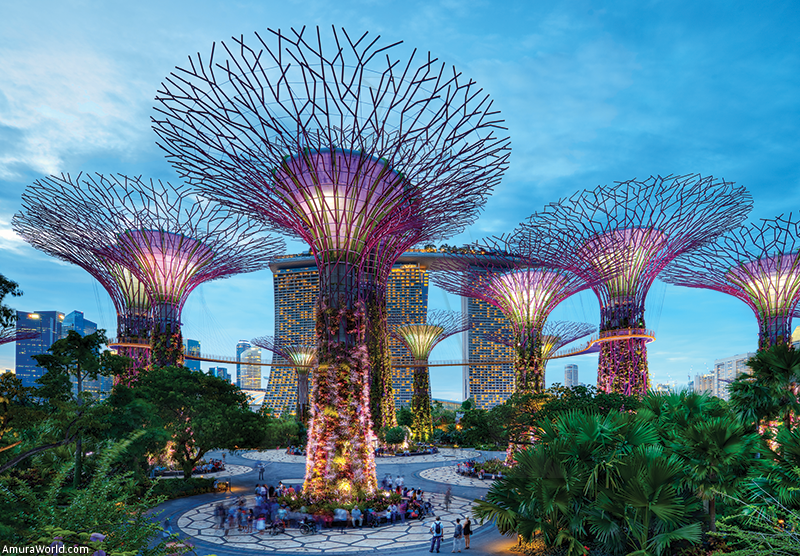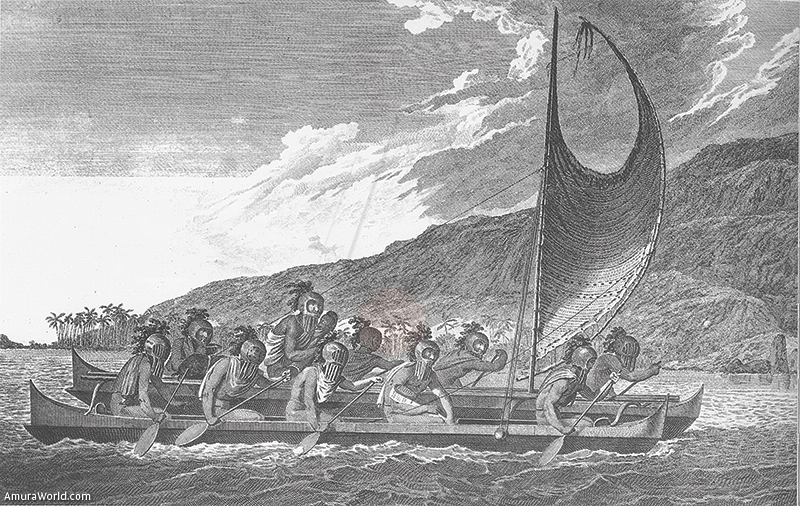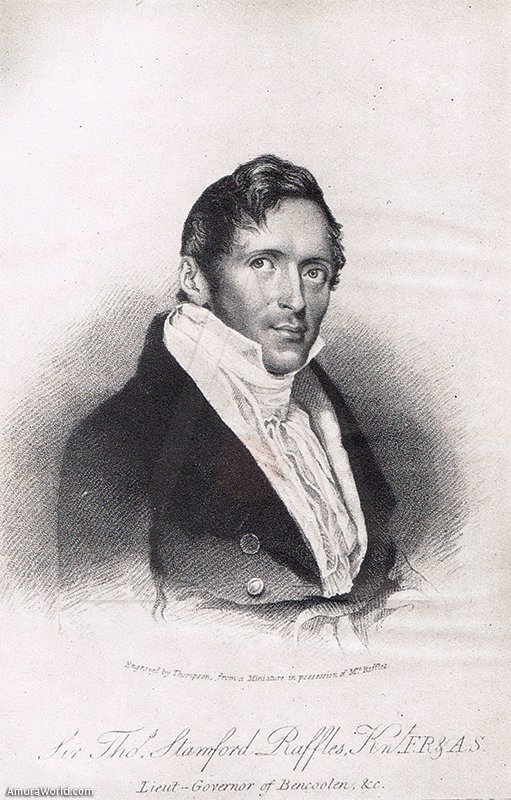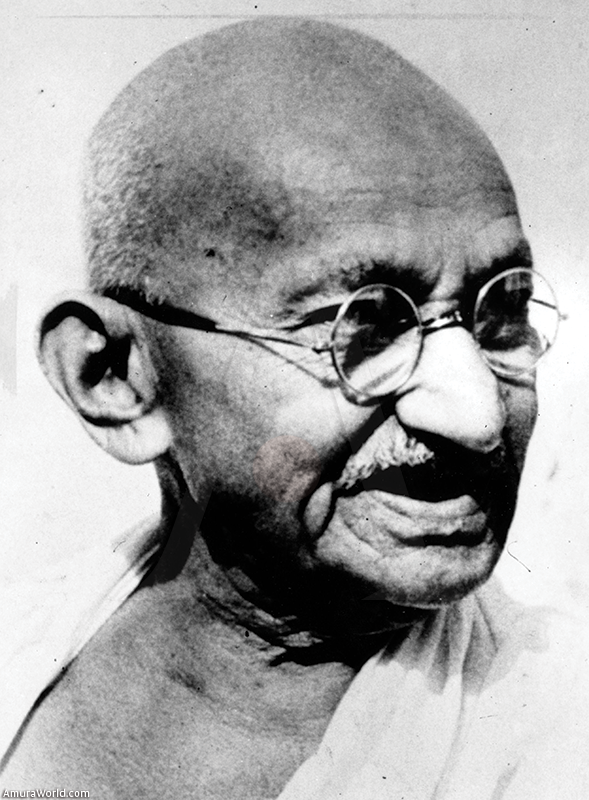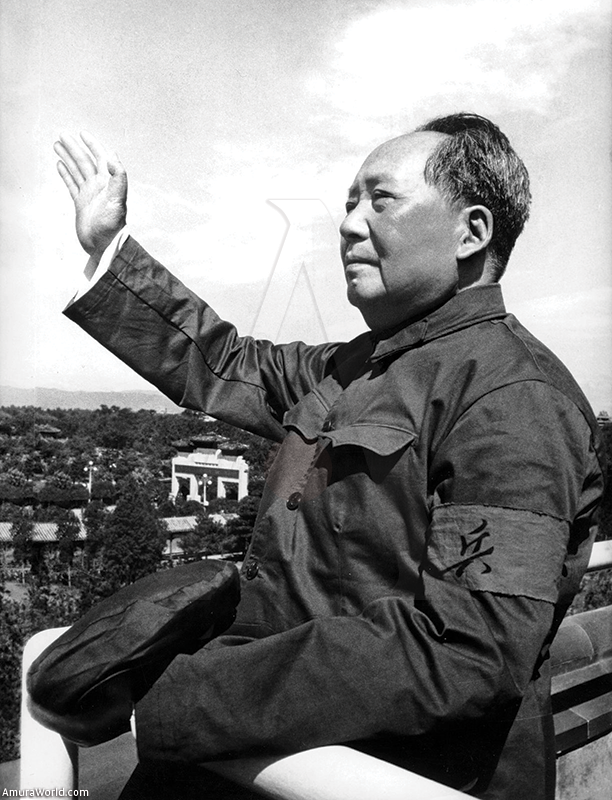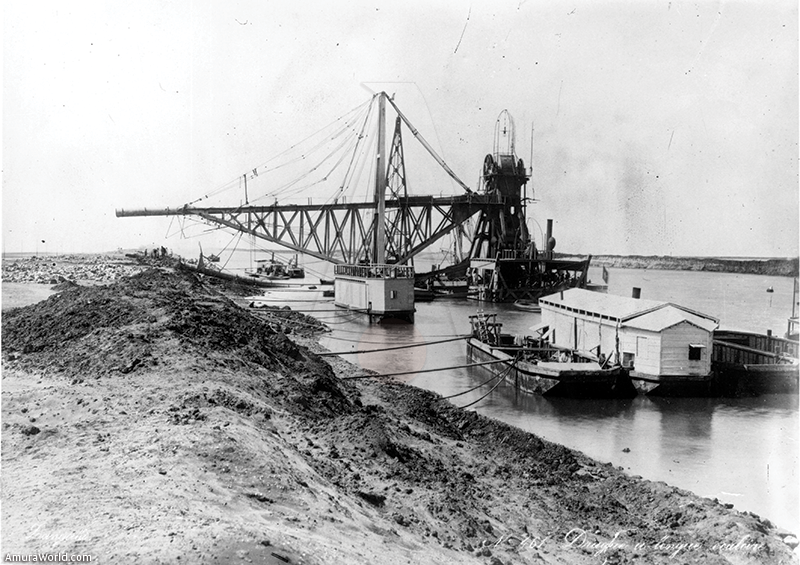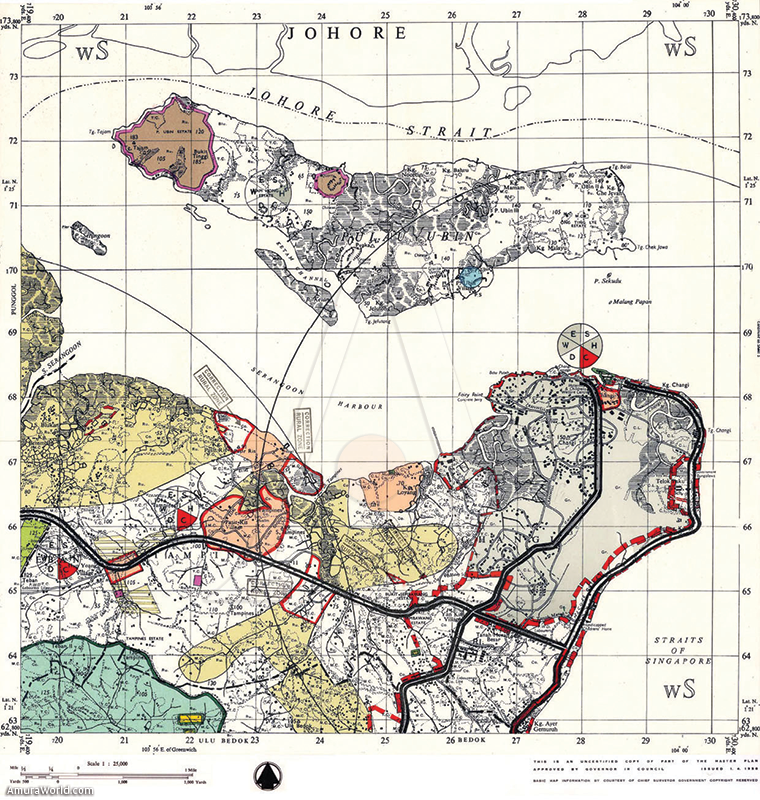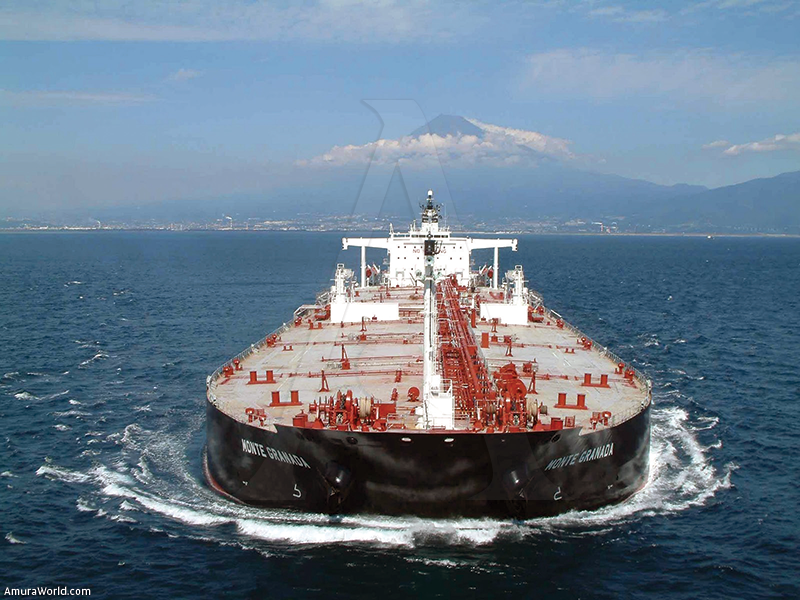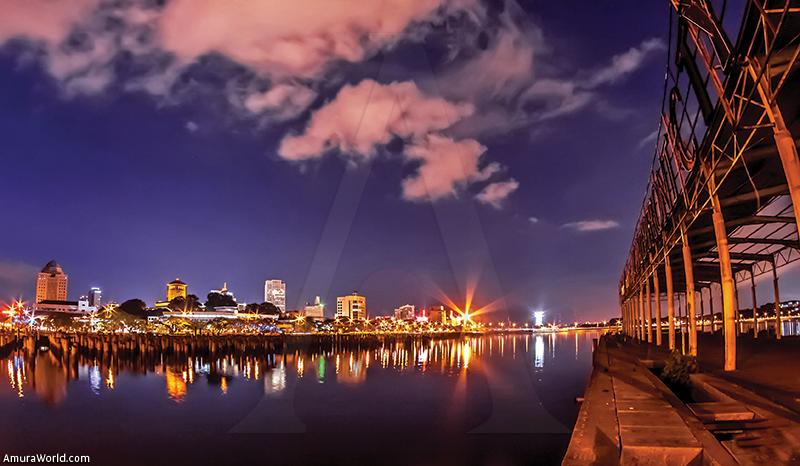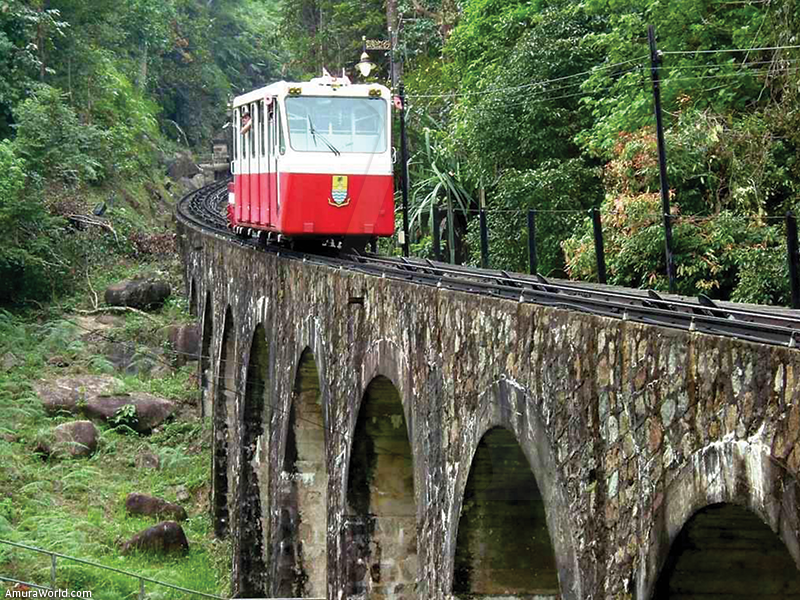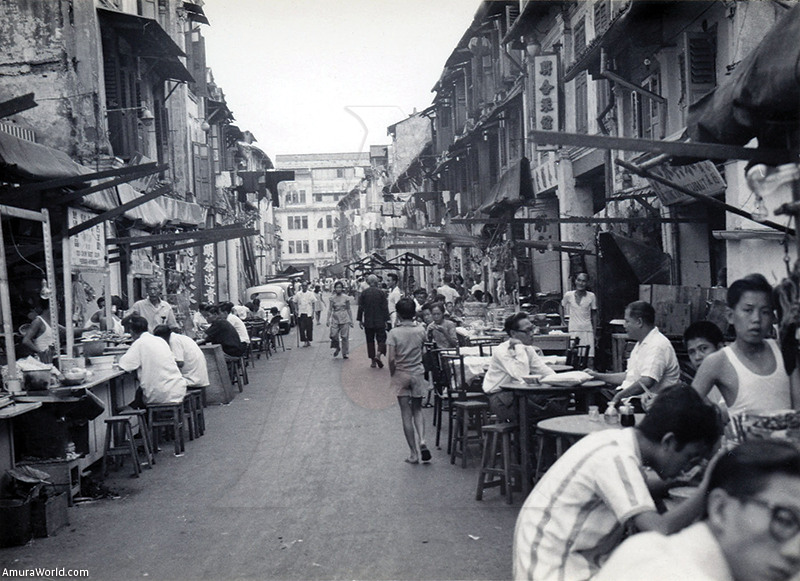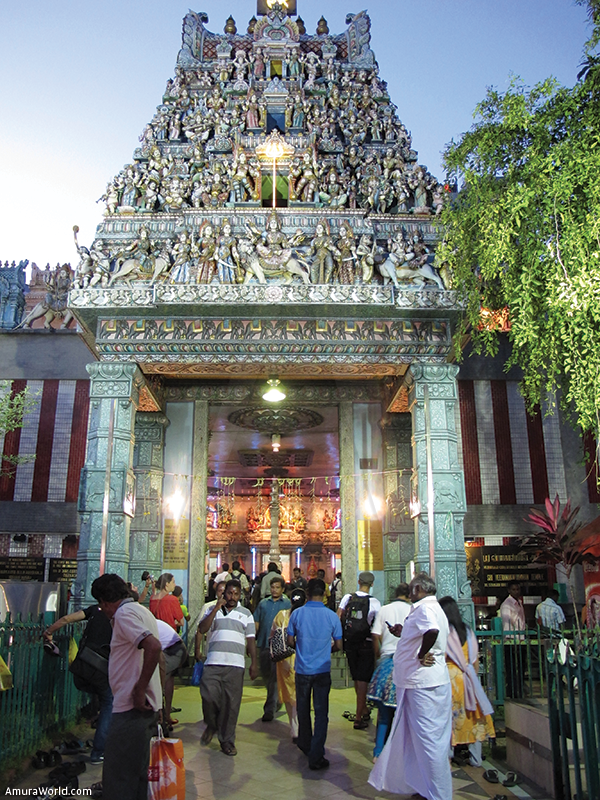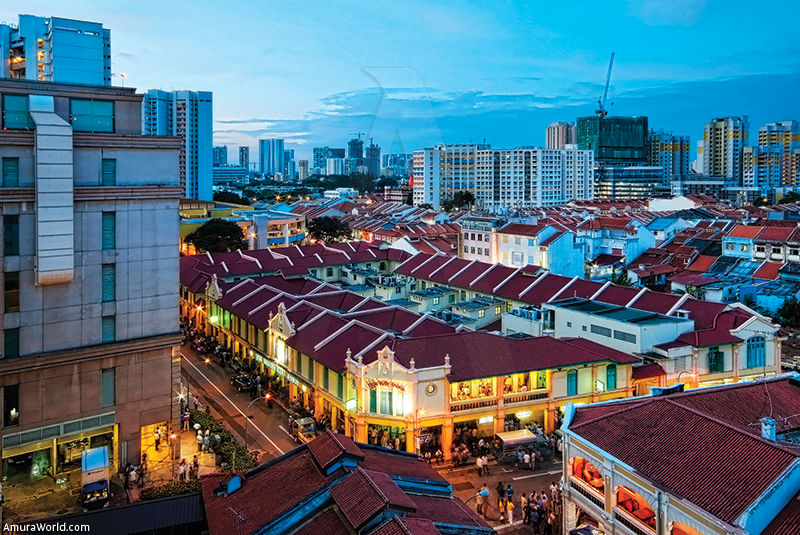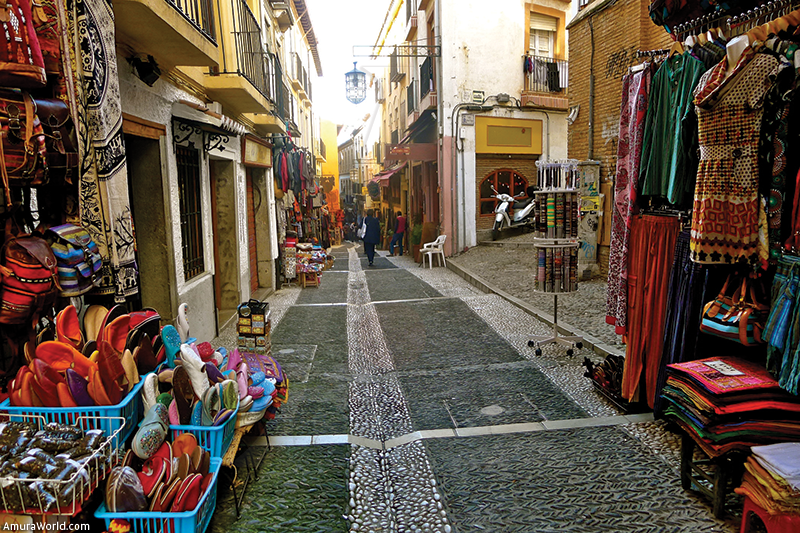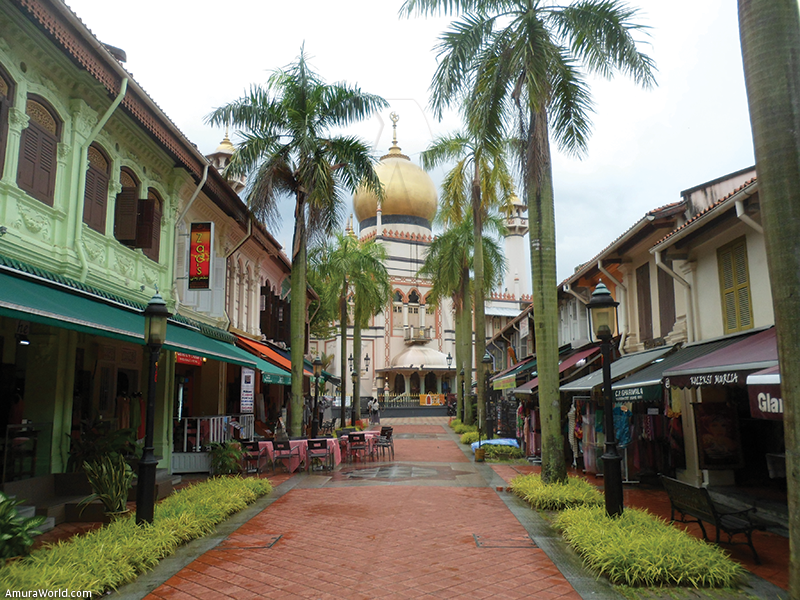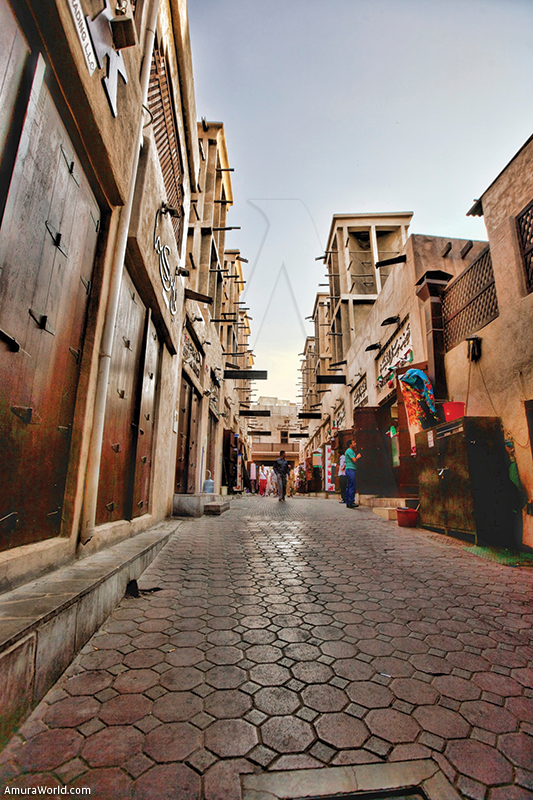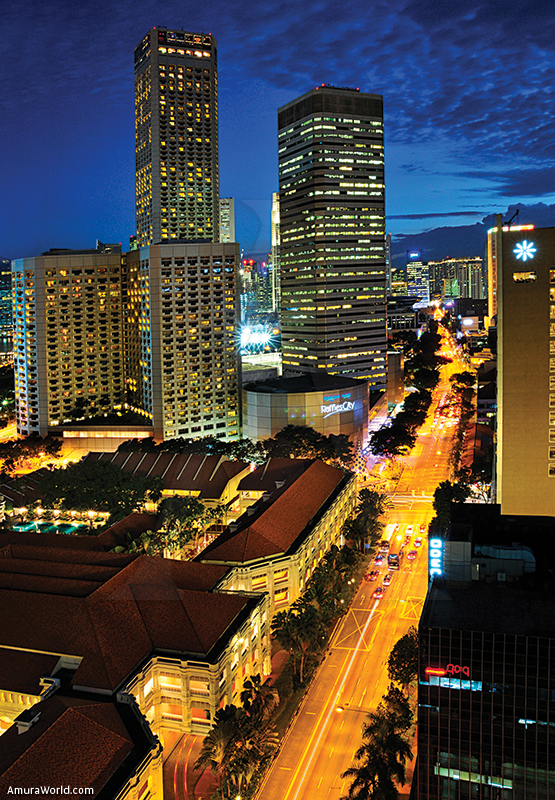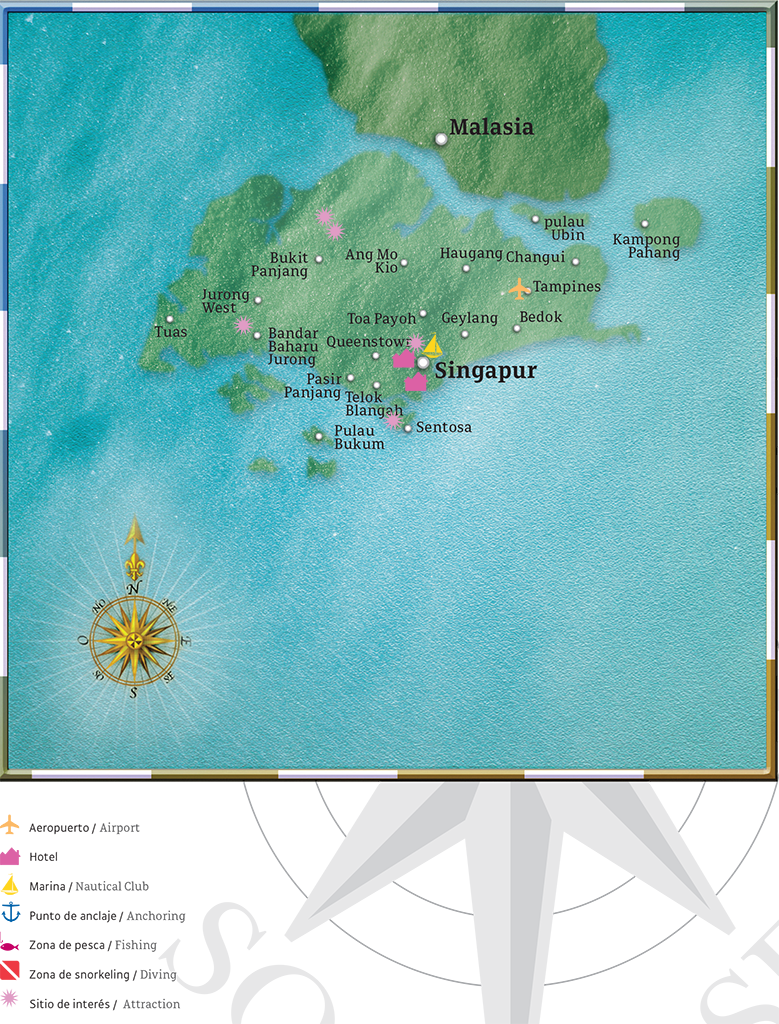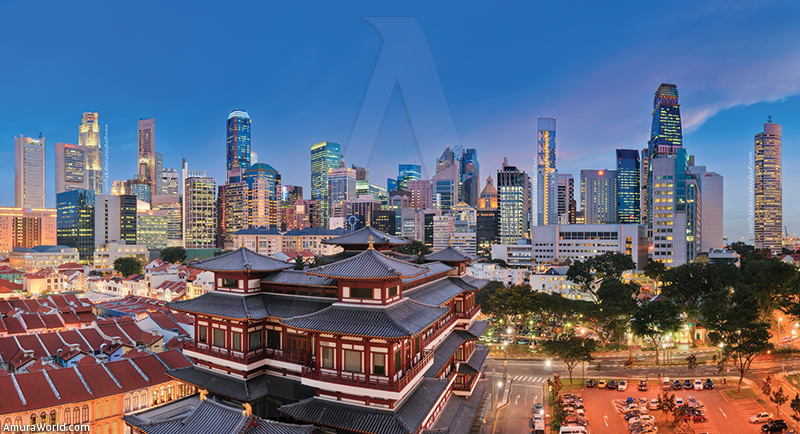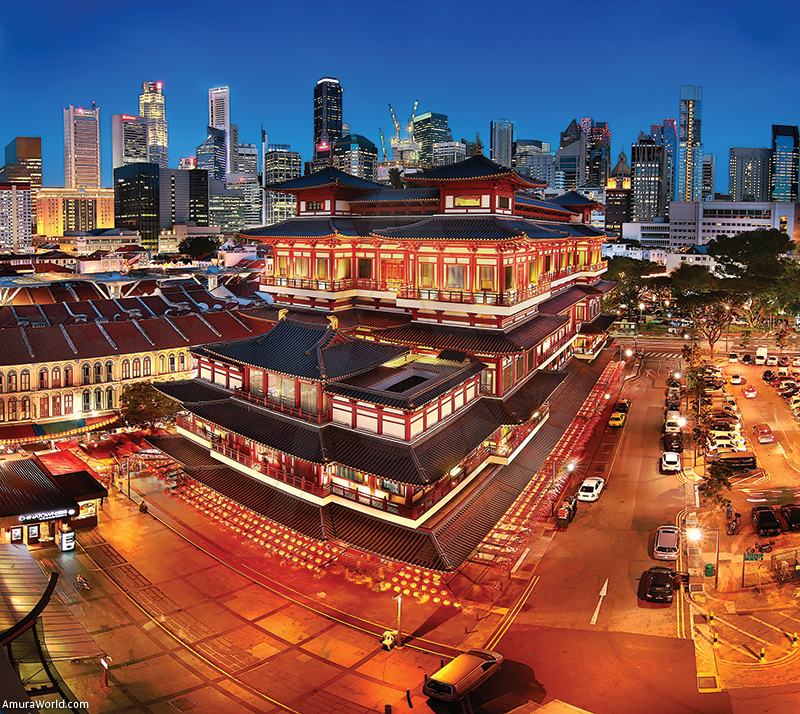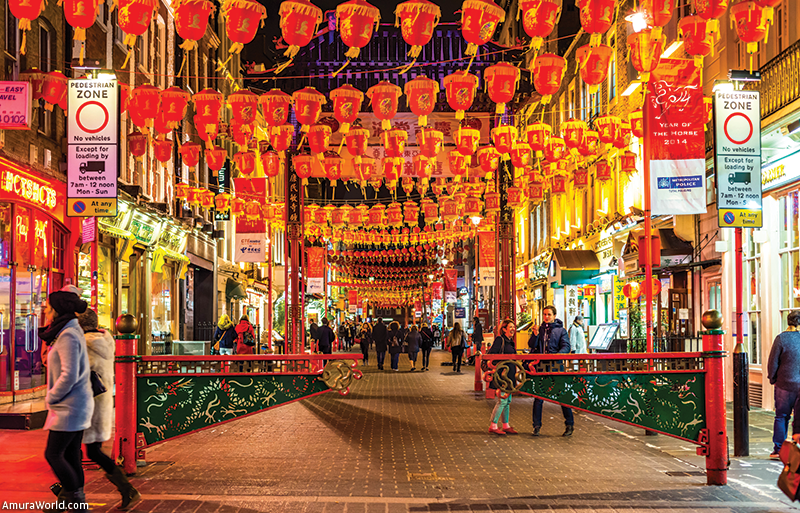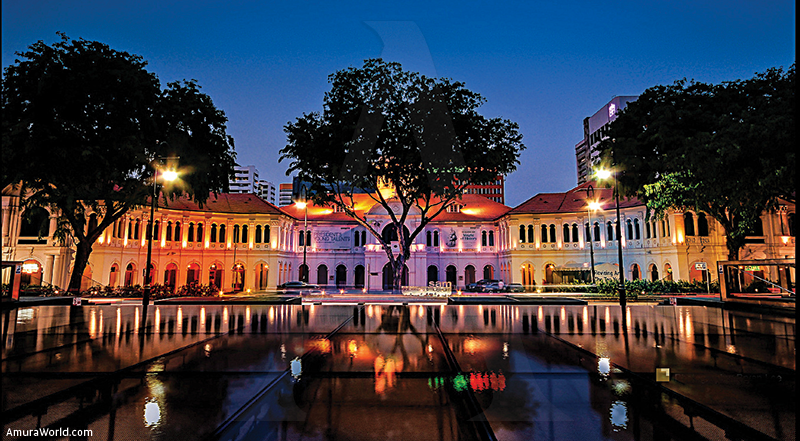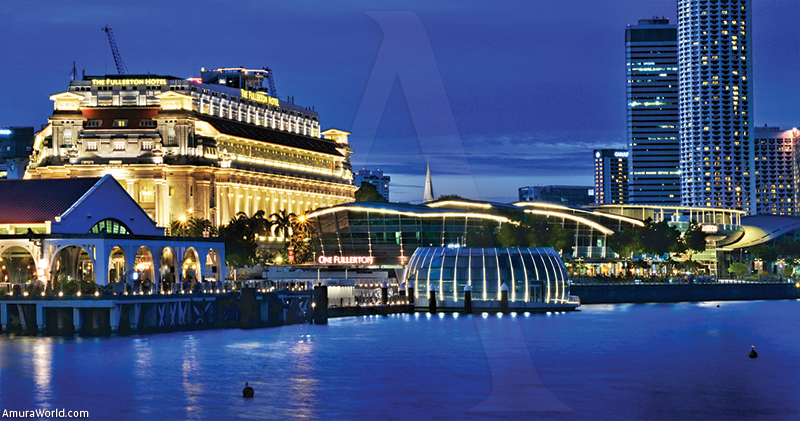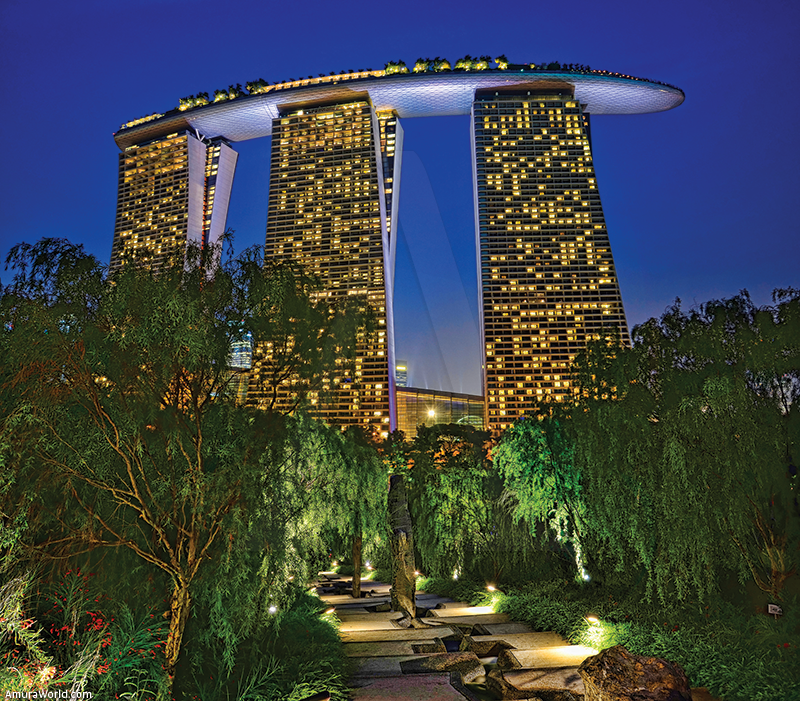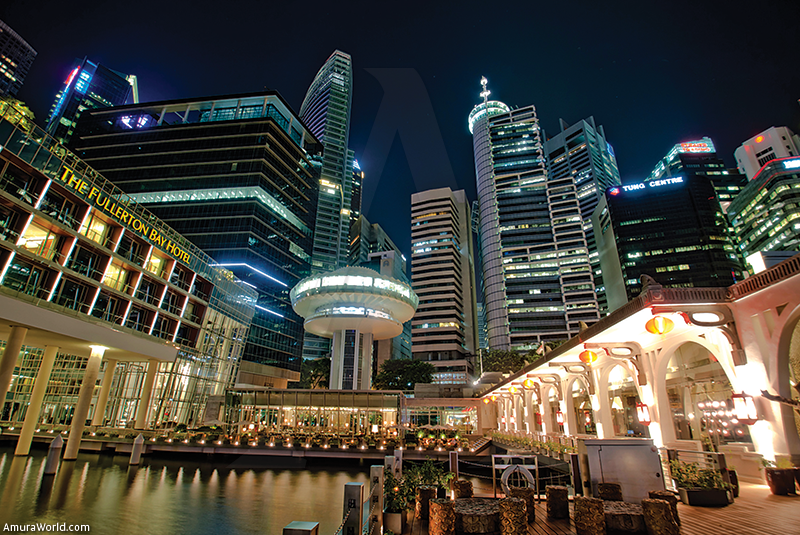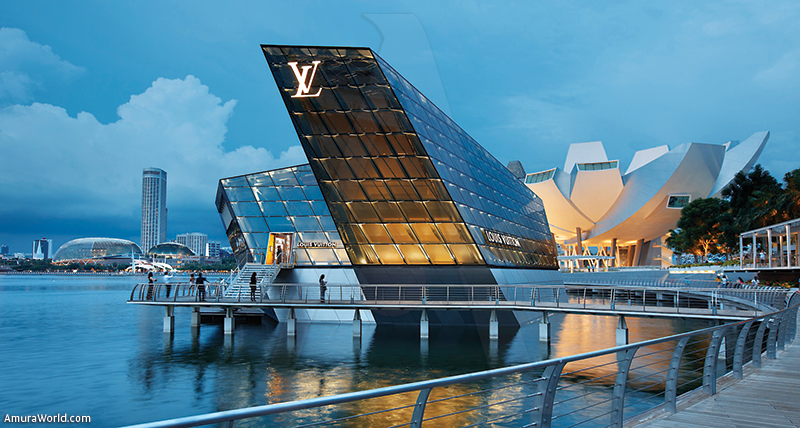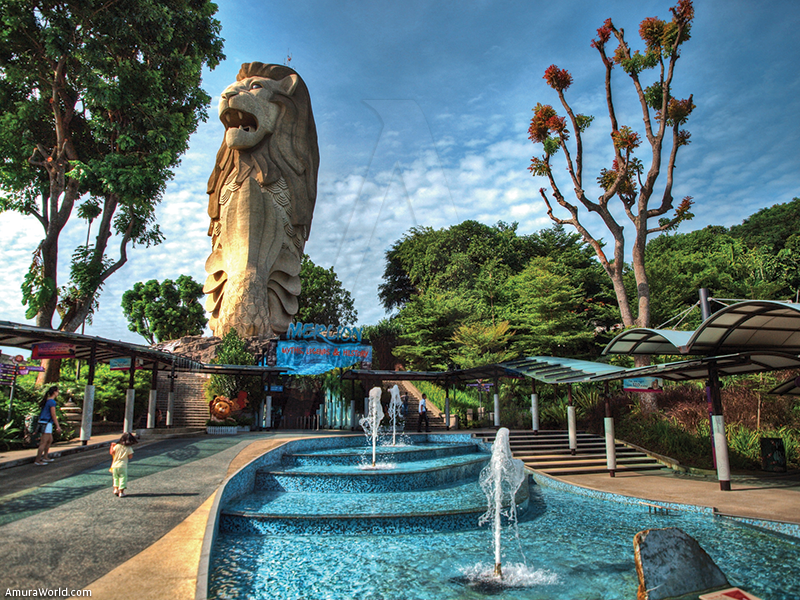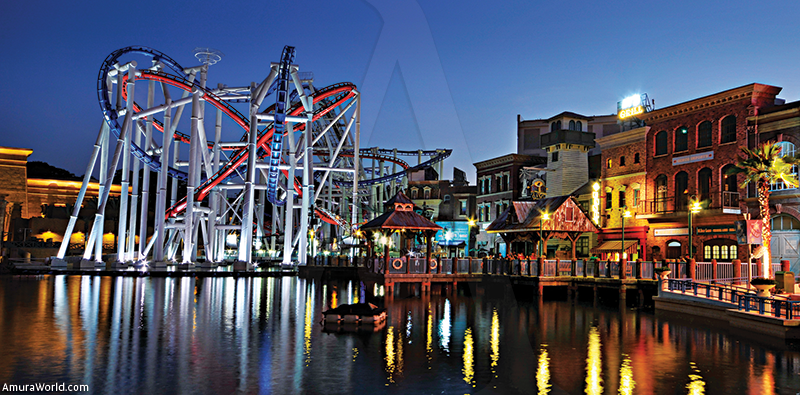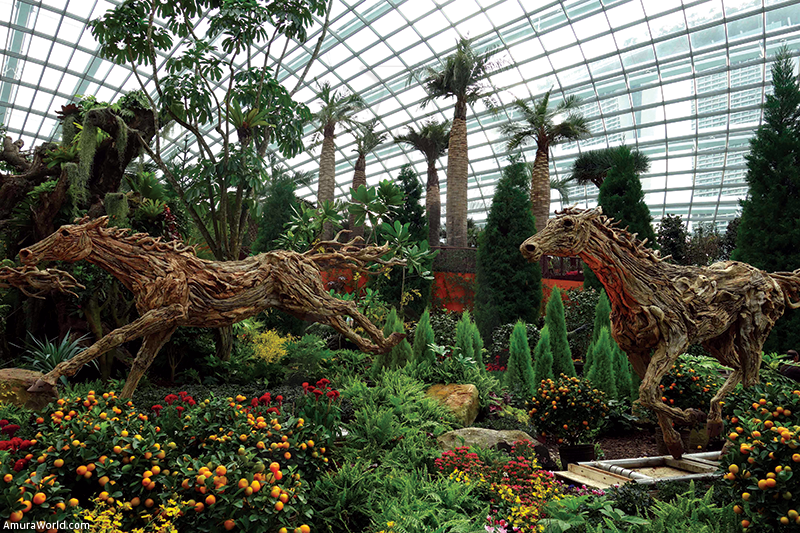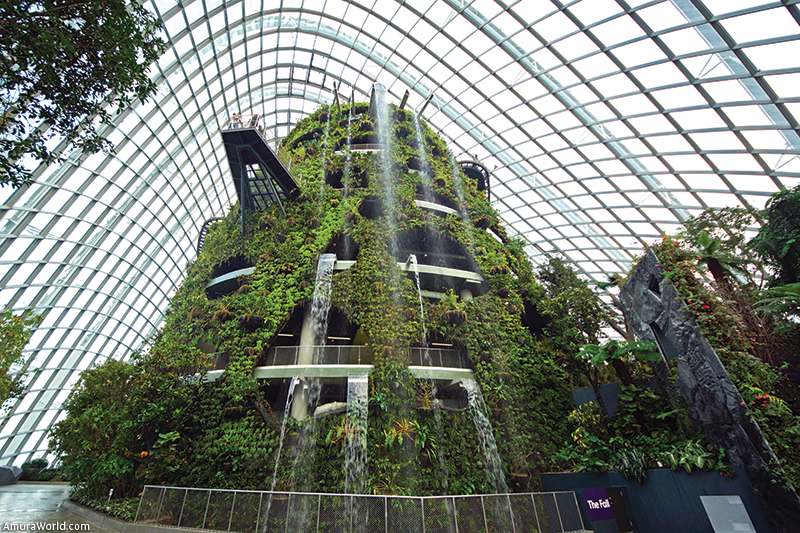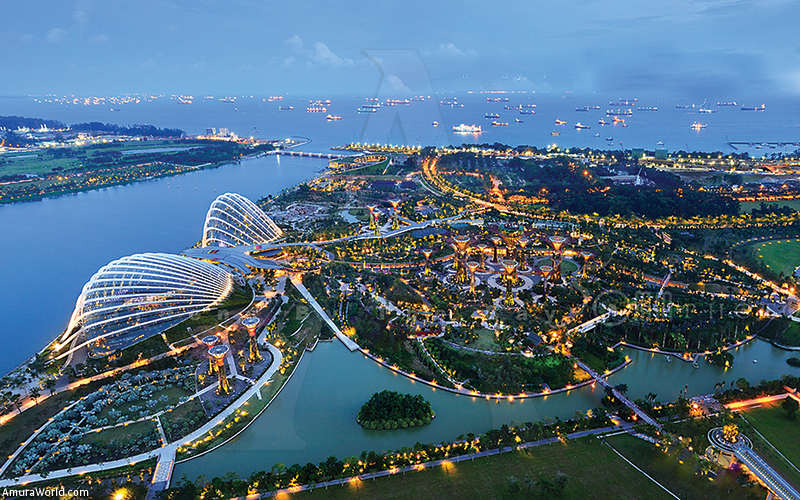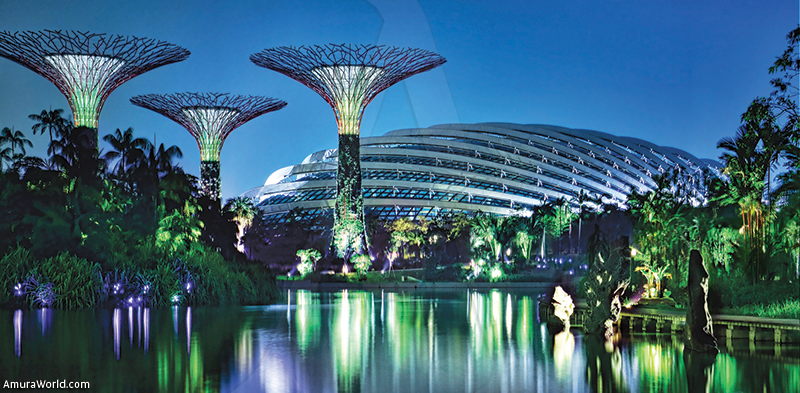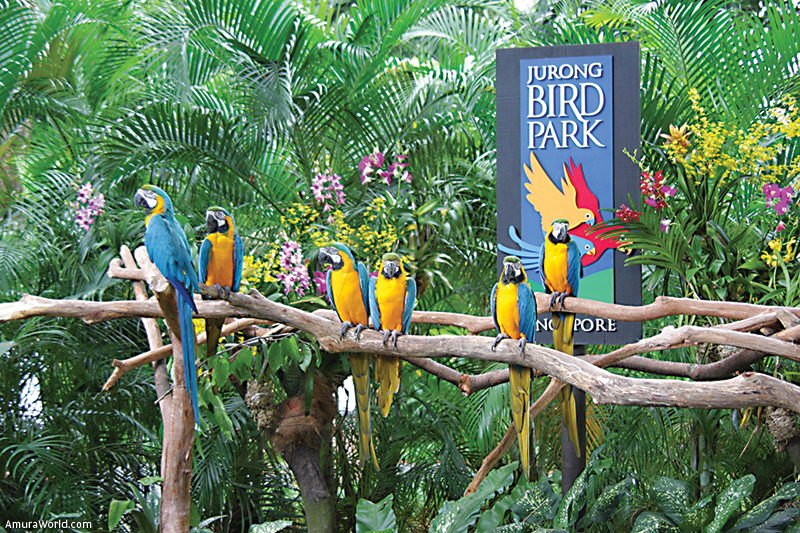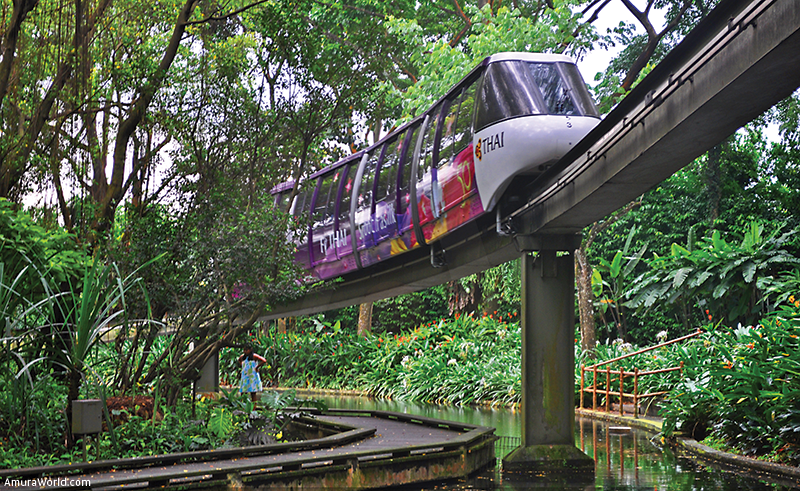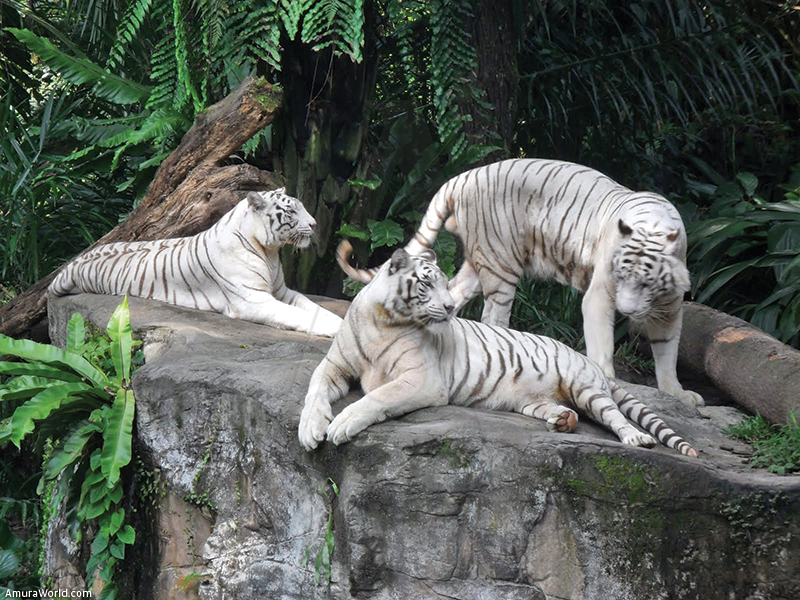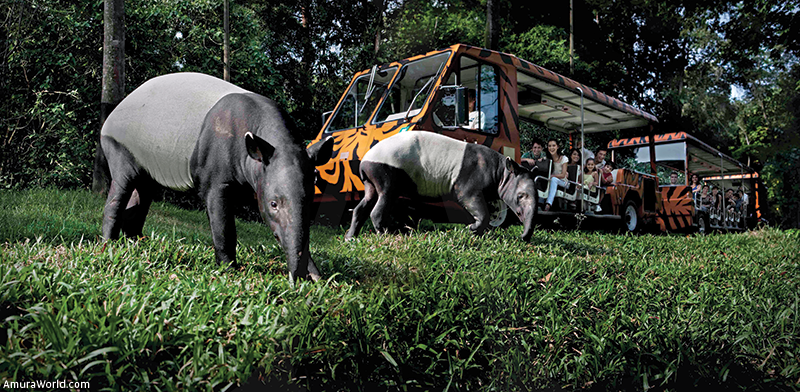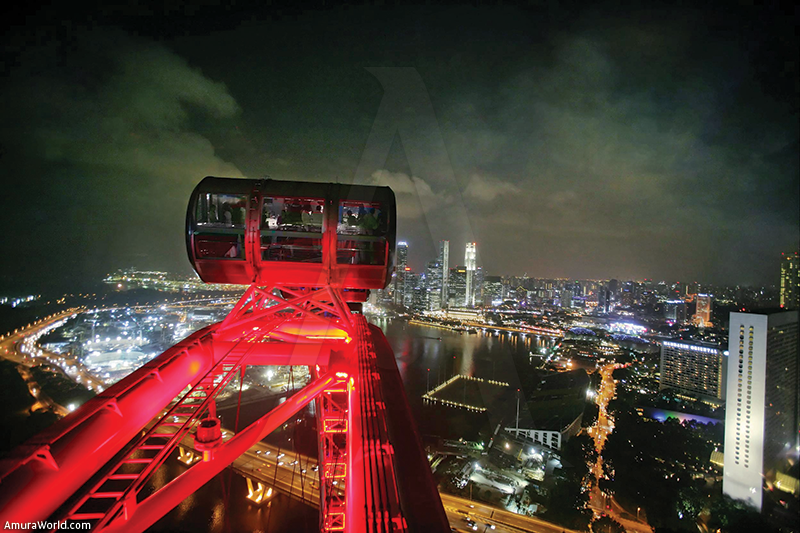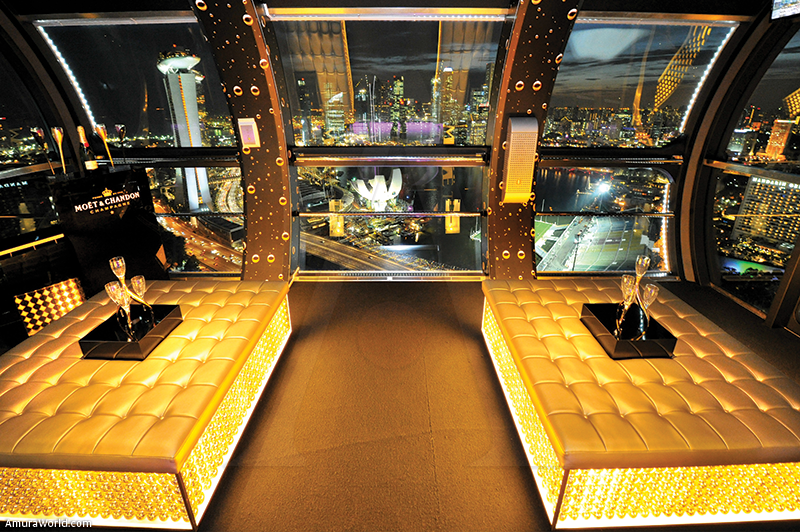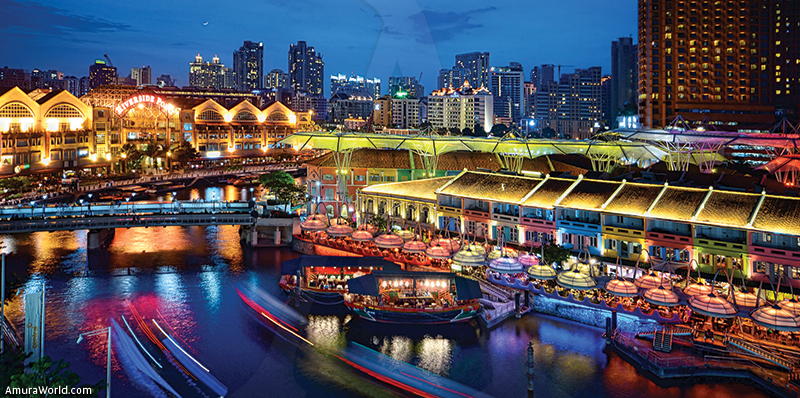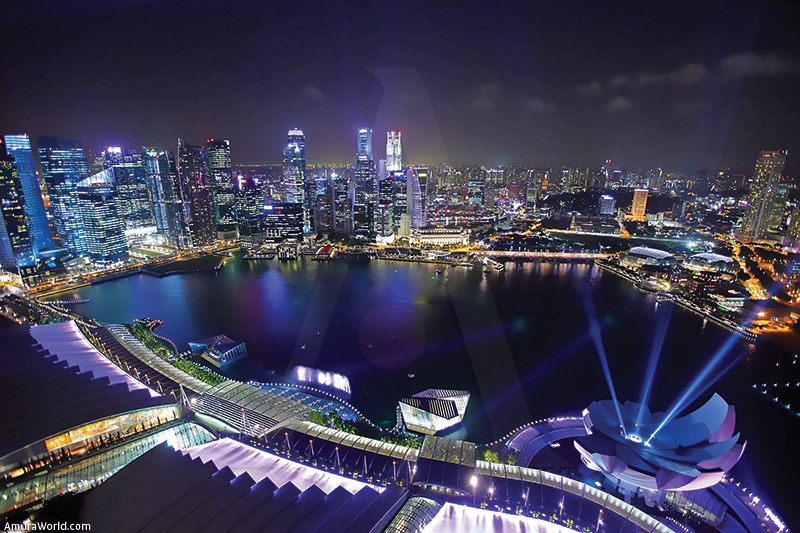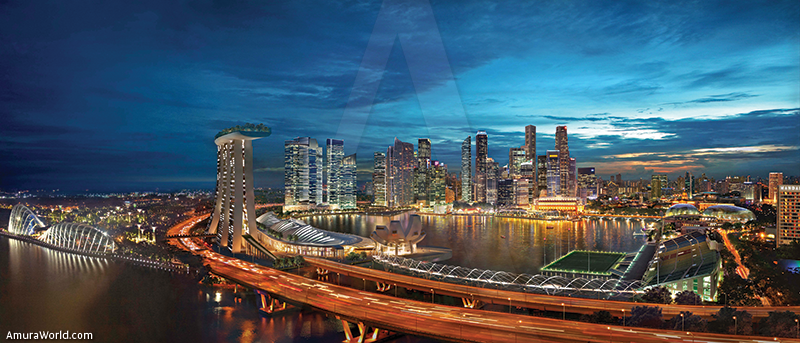The harbinger of the lion in the orchids’ garden
The good omen born this Southeast Asian nation sitting on a small archipelago, which seen from space shows points of a nebula that emerges from the deep waters of the Pacific. Jungle landscape in which a rich variety of orchids, is the flower of Singaporean identity.
The name of Singapore is referred to a relative of Alexander the Great, Sang Nila Utama raja, who upon landing looked in the distance a fantastic animal that seemed a lion. The revelation invited him to stay in the island, which he named with the words Singa-pura, meaning City of the Lion.
The symbolic animal is part of the founding myth of the malaya-polinesia primitive society, ancient town of the first navigators to inhabit Singapore. It currently says “Asian Tigers” to Singapore, Korea of the South, Hong Kong and Taiwan, by the potential and industrial-commercial dynamics, which share space and relations with China, India and Japan, broad swaths of the automotive market, machinery marine, telecommunications and navigation instruments.
Empires, whose implementation ceased with the defeat of Japan and the independence of Singaporeans in England, which since then undertook the journey, being themselves -again- who guided his ship in the modern history, amid calm and stormy seas.
The times change
The major stages of its history are those of the original community that began to dwell in the 14th century, English colonialism, which was established from 1819, when Sir Thomas Stamford Raffles decides to establish a commercial harbor there, after being expelled from Java by the Dutch. Under the English Crown, Singapore was developed as a commercial port.
The region was beaten, first by the independence of the India fed by the non-violence of Mahatma Gandhi in 1947, followed by the popular revolution China of Mao Tse Tung, ten years later, both in different proportions receiving the influence and support of Soviet Socialist polo, originating from new relationships and boundaries to this region of Asia, which will change with the fall of the USSR and the orientation towards industrialization and the popular China market.
The inhabitants of Singapore believed not viable, in isolation, lack of natural resources and its limited geographical, emerge as a new nation space. Thus the island acceded to the Federated States of Malaysia in 1963. Subsequently, the irreconcilable differences between the Chinese Government of Singapore and the Malaysian-Muslim of the Federation led to their expulsion and birth as independent in 1965 City-State. Center City in the jungle, which is a novel form of port trade in services with a well-planned economy and urban development, with the management of natural resources. All this unfinished clear subjective ties between ancient societies that share a history and cohabit in the same geographic space posed a new culture in the global village to make another free human subject, able to break ties and useless prejudices.
"Work is something you sell, so you must give more added value through education" Lee Kuan Yew
This culture rises on multilingualism that brings to public institutional education imparts two languages, the native language, and the English, which complies with the purpose of national unification. But if you see carefully, this policy shows inequality.
Nowadays is projected as a thriving nation with four main population components: Chinese, Indian, Malay and English, which was born a rich cultural mixture seasoned with over 30 cultures of ethnic groups coexisting with Asian cosmogony, Indo-European, and Arabic, which are assumed as substrates of the modern subject Singaporean of the cyber-age, whose main concern is modernity and progress understood as applied science and advanced technology to live the speed that produce more capable computers and faster vehicles, business with the diversification of trade, thanks to incessant innovations of the sugar industry which is updated every day. This speed is given on an island whose territory is traversed from end to end in 30 minutes.
Infrastructure in an oceanic, unique cartography
Form a continental Bay between Bengal, India and the South China Sea, whose inland unfolds a probe of major islands: Indonesia, Malasya, surrounded by smaller islands which are narrowing the passage of sea in towards the continental shelf. It is a complex system which determines the ways of transit of commercial, passenger, fishing and military fleets.
The yacht or ship route is a cultural, recreational, unique experience for any human being sensitive to the unpublished of the originality of each trip with the active past in the present, which outlines the future in these advanced economies posed new cultures and societies, which claim new sciences, humanities and arts.
Kuan Yew takes control of this nation 1965, being a developing nation
This geo-economic region incorporates greater industrial development of factories assembly plants on the planet. In this type of industry, 55% of employment corresponds to Asia in general; the four Tigers of Southeast Asia in particular.
Singapore, represents the avant-garde facing the future of construction, infrastructure and architecture. Recently, the World Economic Forum considered this island of Southeast Asia as the third most competitive country globally. Much of this productivity is attributed to the system and the operation of the infrastructure, with a planning that anticipates at least 50 years into the future.
90 per cent of the world trade travels by sea, through the Straits of Malacca, Lombock and Sonda, passed 50% of the tonnage of the merchant fleet annual, being the second area of maritime traffic by volume shipment. Singapore is the end of the Strait of Malacca, that is located between the West coast of the Malayan peninsula and the Indonesian island of Sumatra. Ships carrying oil and gas through these straits are destined for some of the strongest economies in the world, such as Japan, Hong Kong or Taiwan, and several of which most fast growing, as Singapore, China, Malaysia, Viet Nam, Korea of the South, the Philippines and Indonesia.
With a volume of traffic estimated at 15.2 million barrels of oil per day, which shows an increase exceeding 10% starting from the historical breakdown of 2007 with China and India, at the forefront of major economies that are only producing to become major consumers of energy and all sorts of raw materials, articles of foodbeverage, drinks and alternative technologies. Crude oil is approximately 90% of flows of traffic, and the rest derived products. Port life will give shelter to more than 60,000 vessels passing through the Malacca Strait each year.
With only 5 million people in 710 km2, the country has developed one of the largest harbours in the world, Changi International Airport and the corporate operating in the City-State.
A State is a territory in Singapore, the island that in 40 years has won the sea twice the territory of Manhattan, faces the challenges of inclusion and services of a multi-ethnic population needs and reorganize their territory according to strategies to prevent the effects of climate change.
With this honesty there are communications and transports in all its possibilities: vessel-ferry; plane with Singapore Changi International Airport that is one of the largest centers of Southeast Asia aviation and offers many international connections.
Talking about trains, the Malaysia railway network ends in Singapore. There are two trains daily and other every day with service of bed which operates from Kuala Lumpur to Singapore. You can also travel in Jungle Railways, which offers you trains daily and with service of bed, linking Singapore with Gua Musang and Tumpat, on the East coast of Malaysia. The Causeway connects the North of Singapore to Johor Bahru, Malaysia, while the second Link Highway -less congested-, connects West of Singapore to Tanjung Kupang, Malaysia.
The city and its charms
The building of the 21st century Singaporean society includes a rigorous state order with controls over public behavior. Drug trafficking is punishable with death; urban cleaning, including streets and public toilets, in a city of services, is totally clean. Any trash thrown deliberately causes fine of $250 and a dirty bathroom a higher still.
It is a regulation that makes a more human coexistence and giving confidence to the visitor, who roam the 10 million per year. Its economic outlay is an essential part of the economy of the Southest island city.
"Lee Kuan Yew makes the difference with his laws and strong hand and are rigorously applied"
Culture, art and traditional neighborhoods and integration
The British colonial Government maintained different cultures separated in districts; after independence, the Government developed integration programmes to end segregation. Art and literature were considered non-productive, received little support at the institutional level. Symbolic neighbourhoods such as Bugis Street were demolished to instead build huge skyscrapers. However, a critical literature has been developed to understand the guts of the social process post-colonial multiethnic and intercultural, as well as expressions in the Visual Arts that take the forefront taking advantage of the technological-scientific onslaught, as telecommunications.
The neighborhoods are reminiscent of “ urban archaeology “ living for any visitor to enjoy the cultures.
Little India
District of Singapore is characterized due to its smell of incense and spices; its colorful clothes, architecture and shops are some of the things that make it so special. The Sri Veeramakaliamman Temple was built in 1881, it is a central Temple of this credo. Sri Mariamman, located in Chinatown. Walking through the streets to see traditional dwellings, sensitive clothing clothes, shops, markets and restaurants. Singapore is a culinary paradise, the most incredible diversity, producing environment and Hindu cultural property. One of the most important commercial centers in Little India is the Mustafa Centre, where you can find from classic Hindu products passing through products of personal hygiene, oriental pharmacy, appliances, electronics, clothes, sport, shoes and gold jewelry.
Arab Quarter
It is the Arab neighborhood with a mosque surrounded by beautiful palm trees and atmosphere of the East. It is the Muslim Center of Singapore, where the mosque Sultan Mosque stands out from its streets. Currently, here are the shops of fabrics, carpets, saris, batiks, leather and perfume, being Haji Lane a real paradise for the lovers of fashion. The Bussorah Street, is full of restaurants of different styles of food, including Indonesians, Persians and Arabs. In coffee shops the Teh Tarik is a must. The Malay Heritage Center invites people to walk through this area, since it is a house in which dwelt the Malaysian Royal family.
Business District
The part of the city in which are found the towering skyscrapers, which are home to a large national and international companies. Also known as the financial center of the city. In addition, this district has lost some part of its importance, since its neighboring districts, Marina Bay and Chinatown has grown in such a way that each one has its own attractions. At the start of a tour around here, you can see several sculptures highlighting the “Bird” of Fernando Botero and “Homage to Newton” of Salvador Dali, in UOB Plaza Tower 1 and 2, respectively. Very close to this place, just some blocks away and leaving the river slightly back, is the oldest Taoist temple in Singapore Yueh Hai Ching Temple, which is guarded by huge skyscrapers and has the presumption of having a decorated ceiling which dazzle to any outsider.
Chinatown
The descendants of these Chinese who had assimilated the Malaysian customs are known as the babas (men) and the nonyas (female). This community is different from Chinese immigrants who arrived later for its cuisine, way of dress and even commercial activity, although they share certain celebrations with the Chinese in the peninsula. In general are known as the peranakan, meaning in Malay “speaker of a foreign language”. In Chinatown there are brushstrokes of cultures such as the hindu and the Malaysian heritage. Important religious centers of the Chinese tradition, both the two afore mentioned cultures are symbolic for its history, architecture and legends, and in the case of Buddha Tooth Relic Temple, that houses one of the teeth of the Buddha as a relic. And one more old, but not less interesting is the Thian Hock Keng Temple. As most beautiful temples in the district, we have to Sri Mariamman Temple, himself of Indian culture; and two of the temples that comprise the Muslim culture are the mosque Jamae Mosque and Nagore Durgha Shrine sanctuary.
Other centers of irradiation of their culture are its management areas endemic or species representing -some of them at risk of extinction- of flora and fauna.
Civic District
Considered the historical centre of Singapore, from the creation and founding by Sir Raffles. In the beginning, the main financial bodies were located here, but with the passage of time were changing to more modern spaces. In the surroundings of the area we find the artistic and historical legacy of the island town. An example is the first place that stepped on Sir Raffles, which has been called the Sir Stamford Raffles Landing Site. In the visit to this site, you can also see the architecture of the Cathedral of the Good Sepherd, the Singapore Art Museum and the National Museum of Singapore, which tells the story of the city through objects, meals and life stories. Another attraction of the neighborhood are the Peranakan Museum, the Singapore Philatelic Museum, the MICA Building, St Andrew’s Cathedral and the famous and important Hotel Raffles, which is one of the most prestigious hotels of the island.
Marina Bay
From 2011, this part of the island has been consolidated as we see it today, with major construction projects. The area you could say that it is divided into two main areas: the Fullerton Heritage complex and the Marina Bay Sands resort. The Fullerton complex is a mix of modern and ancient buildings within which are the Fullerton Hotel, Customs House, Fullerton Waterboat House and Clifford Pier, as an example of the iconic annexed constructions; and by new foundations have The Fullerton Bay Hotel, One Fullerton and Merlion Park, the latter doing homage to one of the nationalist symbols of Singapore.
Marina Bay Sands complex was built in an area that was covered by water, this area has been evolving and gaining a higher value due to its high growth, not only because of its luxurious attractions, but is also growing as a new financial center, new port, equally for his stunning developments. Moreover to reinforce tourism was the installation of a new casino, located in the Marina Bay Sands Hotel; the ArtScience Museum, Theatres at Marina Bay Sands, the Convention and Exhibition Centre, and the Crystal Pavilions.
Sentosa
Small island indoor rainforest, in which wildlife -monkeys and lizards- can be observed. The Islands are connected by a train and cable car, which provides a panoramic view of the all island. The main reason for visit to this island, is the casino, Universal Studios theme park and the Maritime Experiential Museum. One of the more technological is called Crane Dance, that is two giant robotic herons that dance with light and sound. In December 2012, the most spectacular aquarium in the world opened its doors, housing approximately 100,000 animals marine with a variety of 800 species. Definitely, a great break away from the hustle and bustle of the city, as one of the best offers for any of the visitors.
Gardens by the Bay
More recent attractions that exist in Singapore, these gardens were inaugurated in 2012, and have quickly become one of the must-see for any visitor, and are the favorite parts of the city for the same Singaporeans. The Park is divided into several areas, the first in two greenhouses: the Flower Dome, which are different species of flora located in different sections; and the second greenhouse displays a humid tropical environment, where the main attraction is the waterfall that even welcomes the greenhouse. The last section is the wonderful gateway of the Super-trees (OCBC Skyway), that gives a very different view of the gardens and the areas surrounding them.
National Orchid Garden
The orchid is the national flower of Singapore, in particular the Vanda Miss Joaquim, discovered in 1893. It is essential to visit this site natural-magic, within the Botanical Garden, where you can find more than 30,000 species of different orchids.
Jurong Bird Park
The Aviary is considered one of the largest in the world, since it has a population of approximately 5,000 birds of 380 species, which are grouped into thematic areas which are an approach to their habitat. The park boasts a train to scroll through the different areas, and thus not exhausted visitors. Similarly, an area of reproduction and incubators are visitors directed efforts to populate this great place.
Singapore Zoo and Night Safari
They are located in the North of Singapore, they are part of the nature reserve, in the rain forest. There are 2,500 animals of 316 species of which 36% are endangered species. “Its most famous inhabitant is the orangutan and there is a system of elevated walkways to closely observe their natural behavior”.
Orchard Road
Streets of granite, sculptures and buildings that keep big business and the best shops of the best brands of the world are on either side of the road. It is the most exclusive avenue of Singapore. Shopping centres of different sizes everywhere, since they are constantly building new malls and improving the establishments.
Singapore Flyer
Name of the Ferris wheel and also of the complex which is located; it is 165 meters high which makes it the world’s highest Ferris wheel. It has 28 capsules adapted comfortably and the return lasts 30 minutes. From the heights, you can see the neighboring cities such as Malaysia and Indonesia.
Nightlife
When the night begins to take life and after touring the Center and having enjoyed a delicious dinner at one of the restaurants, finding a place to enjoy a drink is not difficult. The areas of Boat Quay and Clarke Quay have variety of terraces, bars and nightclubs, with the best views towards the sea, to also revel in the nightlife of Singapore.
Singapore: Pride of Asia
“Fifty years ago since its inception as an independent nation. A territory limited by the lack of natural resources like water, and inhabited by different cultures as Muslim, Buddhist, Catholic and Hindu; and restricted to an area of 700 square miles, is a short way to define Singapore. But do not be fooled by this context, as this place has quickly become an exceptional nation.
Since 1965 -when it became an independent country-, the process of transforming a small territory, in one of the most amazing cities on the planet, all thanks to a remarkable character called Lee Kuan Yew, responsible for making a difference in every way for the better development of its people, as well as taking the great challenge of education: ‘Work is something you sell, so if you want to add value to your work you must do it through education.’
Nowadays, talking about Singapore is to concern in one of the most cosmopolitan nations of the earth. The shortage in resources and territory have not been a constraint to become a perfect city for tourism and business, due to its airport, the best one in the world, and also as the most complete trading port in Southeast Asia.
Also, the people of this society can make presumption for having one of the highest per capita income of the world, that opens plenty of opportunities for investors. For tourism, the Lion City offers lots of possibilities, ranging from impressive golf fields, towering skyscrapers, traditional ethnic neighborhoods, wonderful botanical gardens, as well as modern shopping malls where the most prestigious fashion brands have strong presence.
Definitely, there is no better way to experience Singapore than visiting the place and being witness of its greatness”
Text: Jesús Peraza Menéndez ± Photo: GETTY IMAGES/LIVE LIM/ANSW/BRITANICA WPS/DAMEN FRIZ/WLS/ARGENTEN/K SKYE/PXZARD/ERWIN SOO/FRANK M/BRIAN LEE/WILLIAM CHO/WESBON/ILOEV/WES NB/GUOWEN WANG/RAQIB/8THS/LIVES/PHILIPS/VIDAFINE/LAYAOUY/AHSX/WKP

